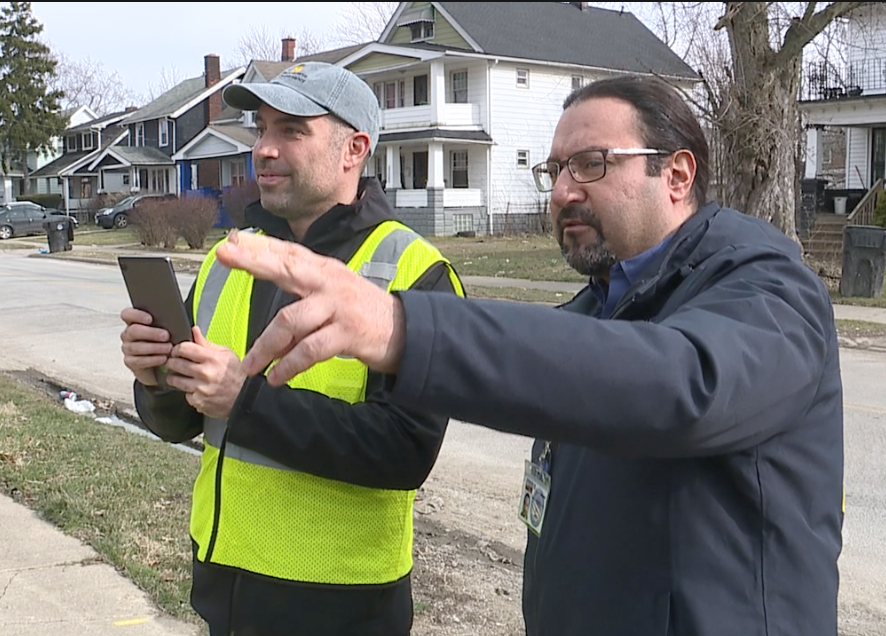CLEVELAND — An exhaustive look at Cleveland's housing and building inventory reveals an increase in vacant lots, a lack of investment from out-of-state landlords, and more than 1,400 vacant structures are deemed an immediate safety hazard.
The results come from a seven-month study surveying the city's nearly 170,000 properties.
Earlier this year, News 5 went door-to-door with inspectors for part of their 1,400-mile journey weaving across the city, examining home after home, building after building, looking at the details and grading them from A to F.

"This, to date, is the most comprehensive property inventory we’ve ever undertaken," said Matt Zone, Senior Vice President and Director of Thriving Communities at the Western Reserve Land Conservancy.
Much of the survey confirmed what many already knew, like how the 7% of out-of-state owned properties are less likely to invest in Cleveland, earning more C, D and F grades than local owners.

We don’t just report the initial story—we follow through to its conclusion. Read and watch our previous reporting on this story below and see more stories that we've followed through on here.
"It’s not a punitive direction we’re heading in, unless you’re a very derelict out-of-state owner because watch out, we’re coming for you," said Sally Martin O'Toole, Cleveland Director of Building & Housing.

"I think we all assumed the out-of-state properties would have a lower grade, and being able to justify that assumption with real data, I think, is very powerful," Mayor Justin Bibb added.
Other takeaways include how half of all vacant buildings in the city were given a D or an F grade, while 94% of all occupied buildings received an A to C grade.
"The first order of business is addressing the worst of the worst," Martin O'Toole explained. "I don’t want a Clevelander to live next to a derelict property that’s falling down."
The report also showed how the percentage of vacant buildings in the city's inventory actually dropped from 8% in 2015 to 5.7% in 2023.
As a result, the report detailed that there are more vacant lots than ever before, making up 20% of the city's inventory.
"We don’t believe residents should have to call when there’s a bad house on their street; we should be on top of it," Martin O'Toole said.
Now, city leaders said this data will help guide them to the worst of the worst and what needs to be done.
"At the end of the day, this data means nothing unless it directly benefits the residents and businesses within our city," said Isaac Robb, Vice President of Planning and Urban Projects at the Western Reserve Land Conservancy.
Martin O'Toole said they have set aside $21 million in ARPA funding to remove blighted homes, and she hopes to acquire more grant money to make way for what’s next.
"We want to make sure we can preserve what we can preserve and revitalize what we can revitalize, and those properties that are D or F and we have to demolish those properties, making sure we have a strategy to turn those vacant lots into a productive asset for the city of Cleveland," Bibb said.
To view the map highlighting individual grades for homes and buildings, as well as other takeaways, click here.










